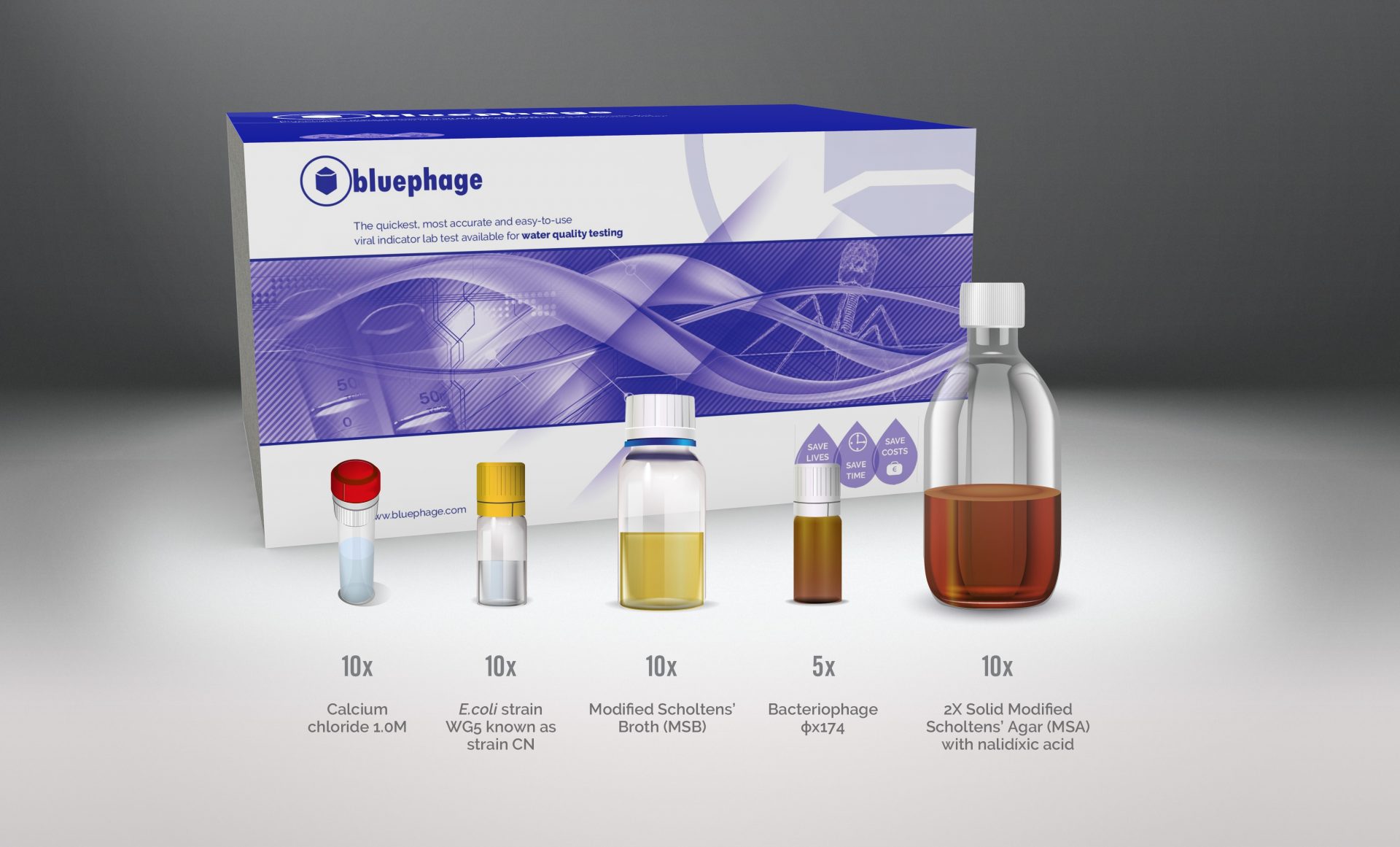BLOG | Bluephage
Avoid sample concentration for the analysis of somatic coliphages in 100 mL

The BP1604 kit has been designed to facilitate the analysis of somatic coliphages avoiding the concentration step, which in addition to generating losses, requires an effort in qualified personnel.
The European Directive (EU 2020/2184), establishing the technical-sanitary criteria for drinking water quality and its control and supply, incorporates the analysis of somatic coliphages as viral quality indicators. This fact contributes significantly to improving the microbiological quality of water since, for more than 100 years, the microbiological parameters applied have been based mainly on bacterial indicators. Therefore, the incorporation of somatic coliphages contributes to improving prevention and reducing risks caused by the potential presence of viruses, not guaranteed by the absence of bacterial indicators.
This new parameter must be assessed for a volume of 100 mL of sample, and both standards indicate that two methods will be applied. First, the ISO method 10705-2 for Water quality. Detection and enumeration of bacteriophages. Part 2: Counting somatic coliphages establishes the analysis methodology for a sample volume between 1 and 5 mL. Obviously, 20 replicates of 5 mL of the same sample can be made to process the required 100 mL and seeded in 140 mm Petri dishes. However, this option entails significant material and human resource costs.
For this reason, the regulations indicate the application of the ISO 10705-3 method of Water quality. Detection and enumeration of bacteriophages. Part 3: Validation of methods for the concentration of bacteriophages in water. This ISO method indicates how a user or laboratory must demonstrate its concentration method is valid following the numerical analyses detailed in this ISO.
The user may adapt one of the concentration methods indicated in ISO 10705-3 in its annexes, but this does not exempt the user from demonstrating the validity of his developed or adapted method. Obviously, the concentration method used by a laboratory or analyst must be accredited according to the indications of this ISO 10705-3 with the competent accreditation authority or agency.
It should be borne in mind that, like any other method, the concentration protocol has a recovery associated with it and that this will depend on factors as diverse as the type of concentration, the origin of the components of the media, and the extraction or elution solutions and the physicochemical characteristics of the sample.
This pre-concentration of samples before applying ISO 10705-2 is usually required to analyze waters with low levels of somatic coliphages. In contrast, if a 5 mL volume of such water is analyzed by method 10705-2, without performing the pre-concentration, then the sensitivity of the method (detection limit) is 20 PFU/100 mL. Somatic coliphages present in the sample will not be detected at levels below this value, and therefore the absence of this viral indicator cannot be assured, for example, in drinking waters, where the lack of somatic coliphages in 100 mL of sample is required.
In addition, the accuracy and precision of the method are also affected by the inhomogeneous distribution of such a low concentration in a solution (Poisson distribution). This effect must always be taken into account in the microbiological analysis of environmental samples. If a laboratory has not properly accredited its concentration procedure in this way, using it to analyze drinking water is not advisable since it cannot meet the detection limit required by current standards and regulations.
Concentration techniques can significantly reduce recovery, resulting in lower sensitivity of the method when calculations are performed after enumerating the elution using ISO 10705-2. Some validated techniques can achieve recovery levels of 40-80% (Méndez et al. 2004) and (IELAB, 2022).
The BP1604 kit has been designed to facilitate the analysis of somatic coliphages to avoid the concentration step, which in addition to generating losses, requires an effort in qualified personnel. This kit, ideal for low-concentration waters, allows to full analyze the 100 mL of the sample required by current regulations since the analysis of the entire volume is performed using 5 Petri dishes of 140 mm, thus avoiding the reductions caused by concentration methods and providing the total value of somatic coliphages present in the 100 mL. In addition, this method presents a detection limit of 1 PFU/100 mL and no coliphage losses, as always occur after applying any concentration method (IELAB, 2022).



Buenos días:
estamos interesados en su Kit de colifagos somáticos para aguas de cosnumo según RD 3/2023.
Pueden pasarnos información detallada y precio.
Gracias.